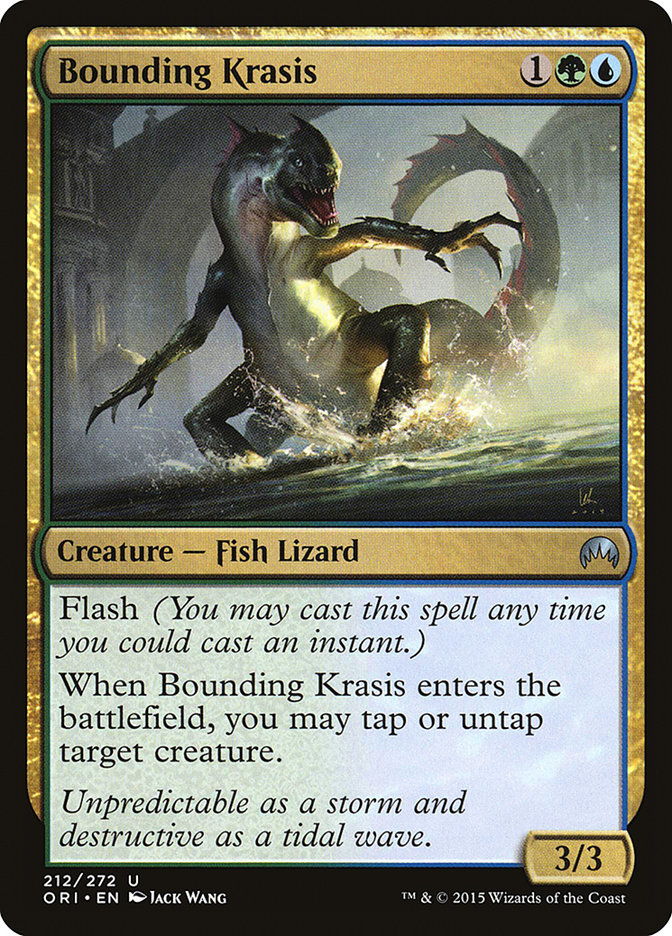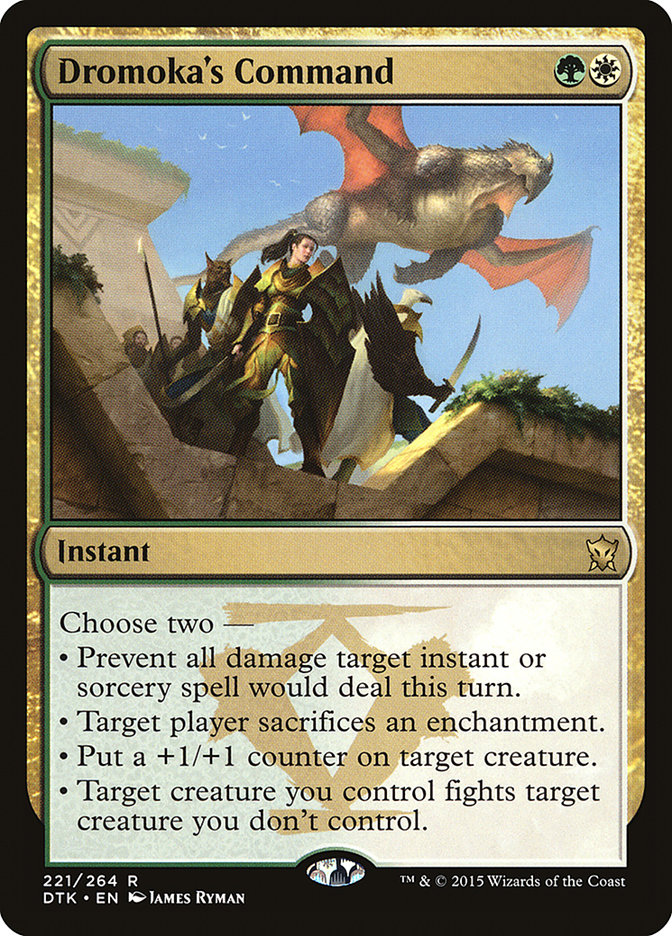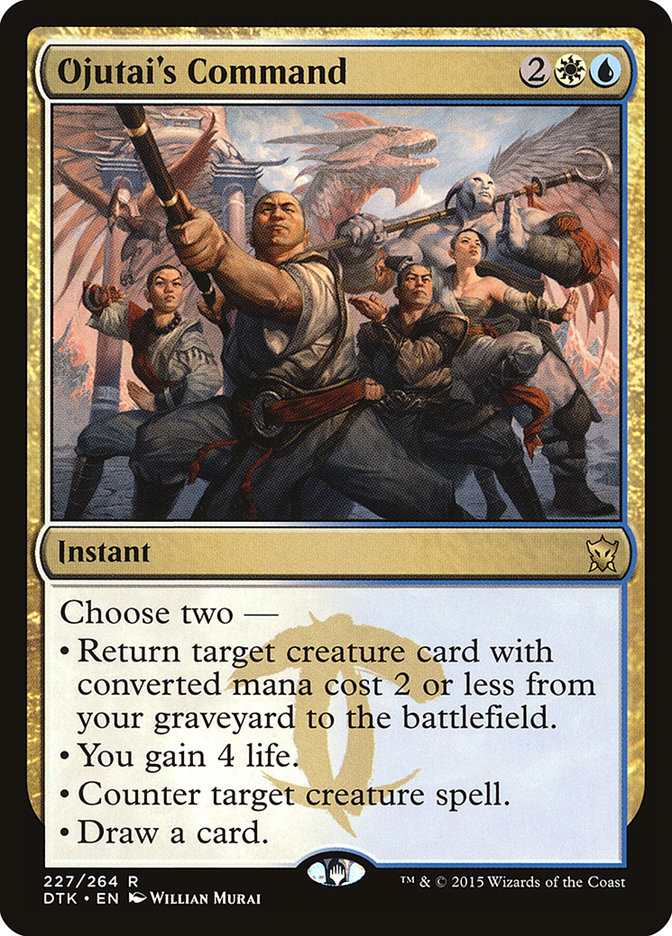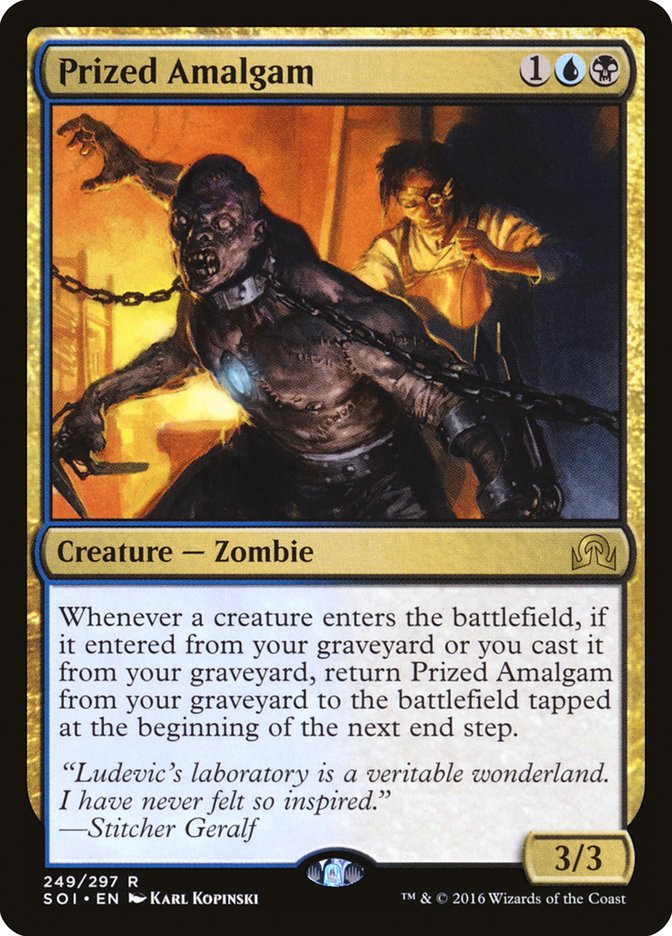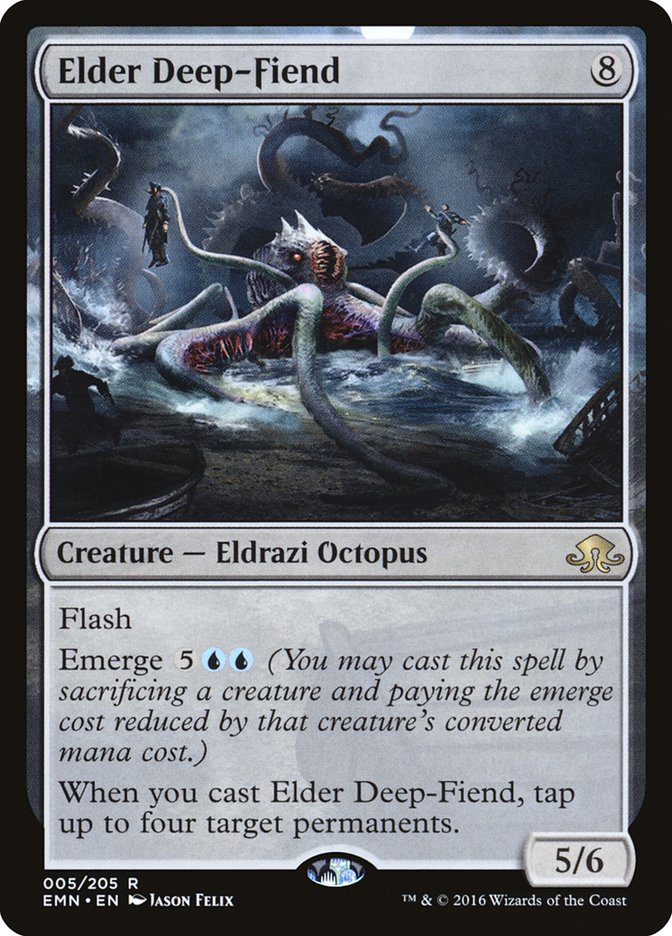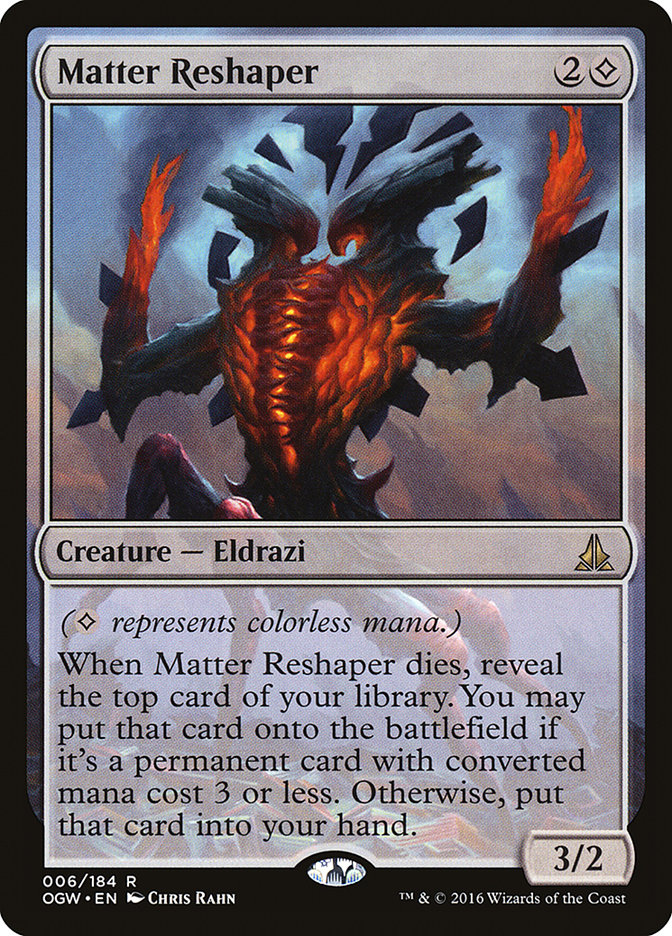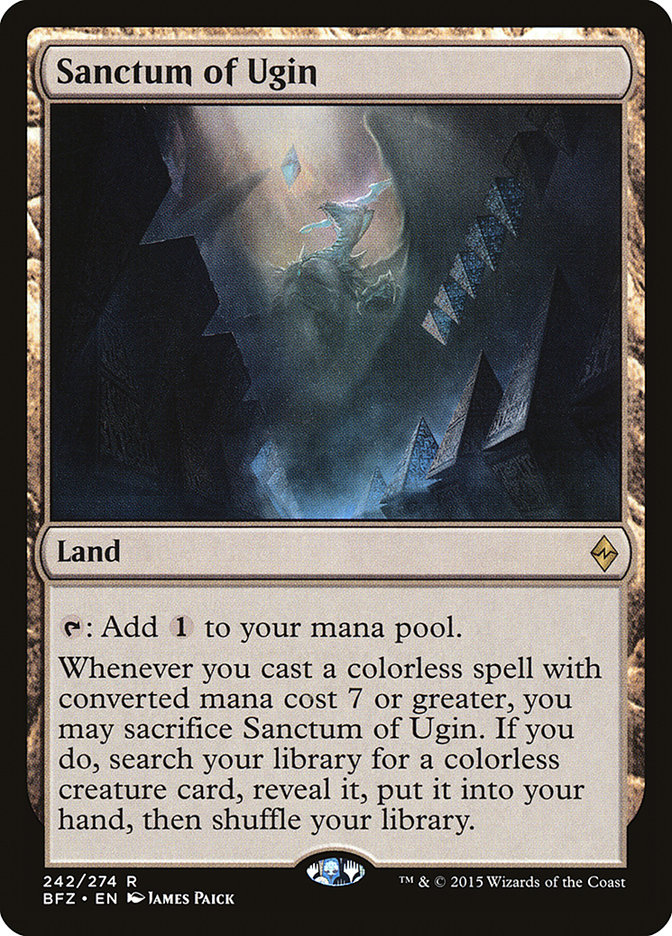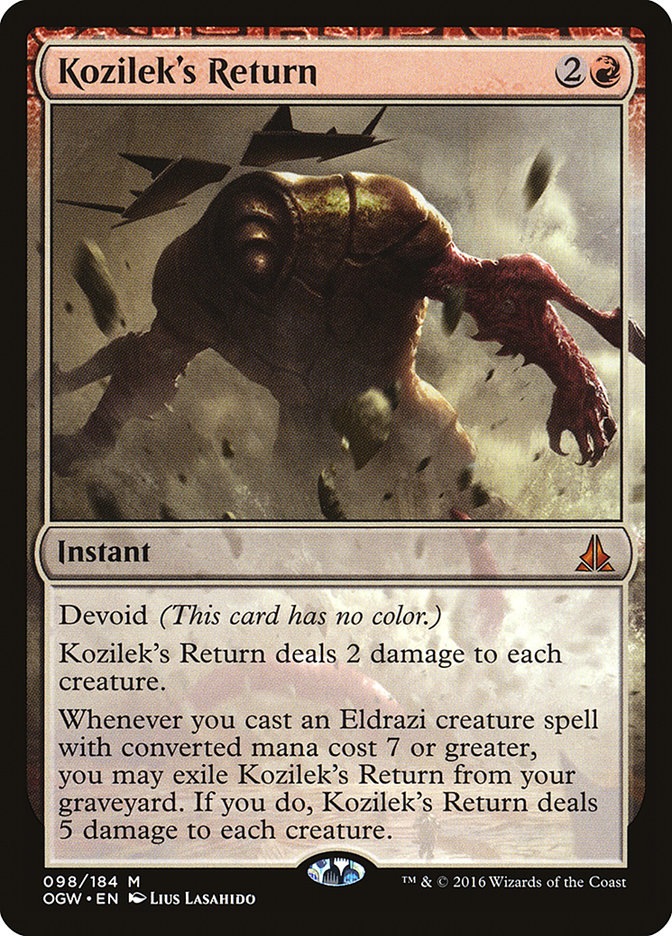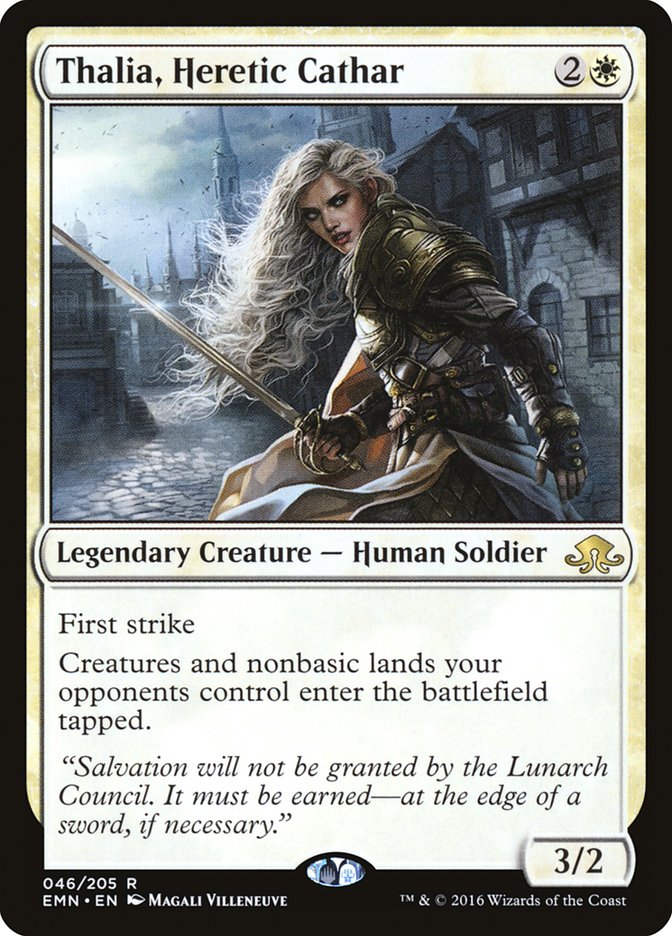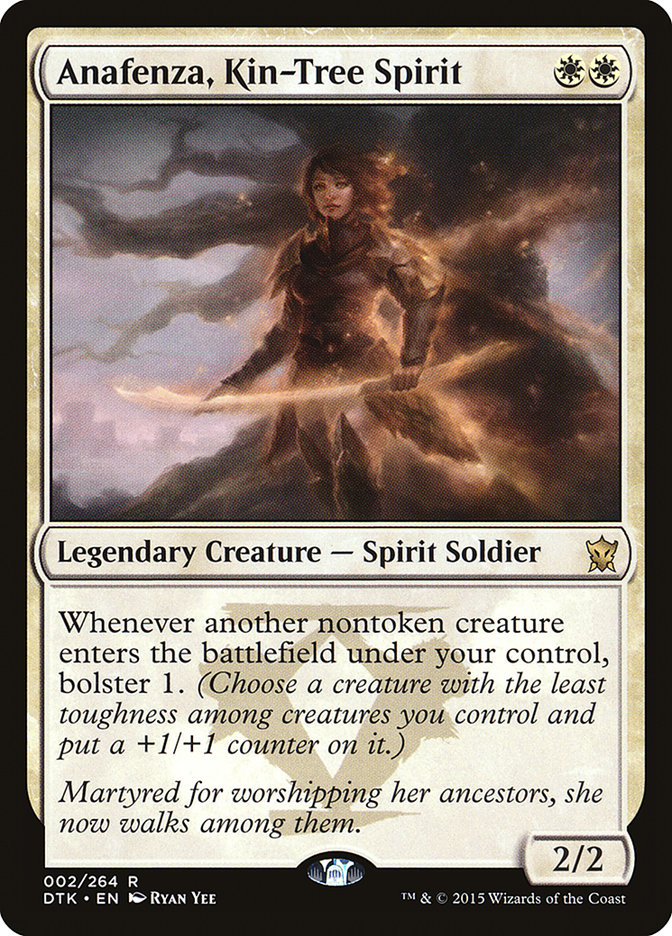#SCGCOL is this weekend and it marks the debut of the Eldritch Moon Standard format. While it might be easy to assume that a second set won’t make much of an impact on the format, that couldn’t be any further from the truth this time. I’ve already given my case for some of the larger culprits that will herald the tides of change, but even outside the emerge titans, there are tons of awesome and powerful cards that are going to change Standard completely.
I’ve been hard at work preparing for #PTEMN and my initial impression of the format is that it is tough to navigate. There are a bevy of difficult interactions to hedge against, and I hope to help you get up to speed on what to expect in the city of Columbus this weekend.
The Big-Picture Stuff
Flash is going to be everywhere. In the previous Standard format there were only two real “flash” cards that were heavily prominent, Archangel Avacyn and Collected Company. As a result, when your opponent passed with four or five mana up, you had a fairly good idea of what they were up to and could plan your turns accordingly.
This is no longer the case. Not only are these two cards going to continue to be staples of the format, but one of the biggest headliners of the set, Spell Queller, promotes an entirely “new” archetype based around flash. Sorcery-speed Standard is dead.
Spirits and the Death of G/W Tokens
Spirits is going to be a big player at least Week 1 and I suspect for the majority of Eldritch Moon Standard.
Spirits, in essence, is a strong representation of how the Standard format is likely to shake up. G/W Tokens was the best deck at the tail end of last season, and despite that title, I believe it will continue to underperform until folks finally stop playing it.
Why? Because everyone else got a bunch of fast, efficient, and hard-hitting tools that filled out their curves and created new decks while G/W got basically nothing. Sure, you can add a few copies of Collective Effort or Gisela, the Broken Blade, but saying that you’ve “updated” the deck is just kidding yourself.
On the other hand, “U/W Fliers,” was already a fringe deck designed to prey upon G/W Tokens, and while I may not entirely agree that it was as big a favorite as many of the proponents of the deck did, it has undoubtedly become a far more fluid archetype. For that matter, Spirits has been given so many tools from Eldritch Moon that there hasn’t even been a unanimous agreement amongst the community on how to even build the deck properly!
At the heart of all of this is Spell Queller.
A flash flier with a solid rate that is capable of munching on Nissa, Voice of Zendikar or Gideon, Ally of Zendikar effortlessly, depending on whether Spirits is on the play or the draw, is a nightmare for G/W Tokens when it already had difficulty dealing with fliers in general.
G/W Tokens is a largely sorcery-speed deck that is heavily reliant on generating traction (I swear I’ll get around to writing this article eventually) with planeswalkers, and a multitude of decks have gotten flash-based elements that threaten to dominate these at times fragile cards.
Spell Queller in Bant Company
Spell Queller also adds more power to Bant Company variants, which I now believe to the best “default deck.” Bant Humans has greater raw efficiency, and may still prove to be superior, but imagine the simple scenario of your Bant opponent passing after not casting a spell with four mana and a Duskwatch Recruiter on the battlefield.
They now are representing any combination of:
Double spell potential on those. Then we have:
How can you ever hope to play around all of these threats? In reality, with the manner in which they’ve likely constructed their deck, they may even have multiple of these cards simultaneously, more or less insuring that you fall into a terrible trap.
There’s also the Catch-22 tension of trying to build a deck that mitigates some of the effectiveness of Spell Queller due to the inherent weakness of expensive spells to Reflector Mage. Trying to strike a balance where your strategy is powerful enough to go toe-to-toe with the efficiency of Collected Company while not being hyper-susceptible to either of the powerful U/W gold cards is supremely difficult but also important to succeeding.
This is likely a big reason why many are infatuated with Ishkanah, Grafwidow. A sturdy creature with a powerful enters-the-battlefield trigger to mitigate Reflector Mage and the right cost to sidestep Spell Queller while also generating a ton of bodies that impose on fliers is theoretically the perfect storm to combat these various Bant strategies.
Bant doesn’t get to have all the flash fun, though. There are powerful tools for red and black as well.
Madness and Vampires
To make a long story short, Tom Ross is right as usual. Just as with Spirits, madness and Vampires got a significant power boost just by receiving a multitude of new cards with their respective rules text. The ability to play spells at “instant speed” by leveraging a madness outlet makes playing against a simple aggressive tribe fairly tricky.
I’m not sure exactly what the correct way to build these decks is, but I know that I’ve had the most success with the combination of Haunted Dead, Prized Amalgam, and Voldaren Pariah. Haunted Dead is subtly one of the more powerful cards in the set and can singlehandedly enable a variety of strategies. Discarding a Prized Amalgam to its ability both fuels the Zombie and triggers the Prized Amalgam that was in your hand!
Just these two cards alone generate a whopping six power at “instant speed,” but it can quickly get out of control when you are able to leverage madness or multiple copies of Prized Amalgam. These two in tandem also conveniently provide three bodies, which can fuel the aforementioned Voldaren Pariah.
I agree with Tom that the Pariah is ridiculously powerful and one of the cards from Eldritch Moon that I underrated the most at first pass. His analysis of it being “black Avacyn” is apt, as it is possible to manage absolutely dominating battlefield positions from the opposition with the Abolisher of Bloodlines. You’re even rewarded with a giant flier that can’t be killed with Languish, Grasp of Darkness, or Ultimate Price!
It doesn’t matter if your opponent is casting Collected Company during your turn or assembling Brisela on their own; they aren’t safe if you have five mana and a Haunted Dead in your graveyard. Be wary of the potential for these black tag-team “flash” tribes.
U/R Emerge
Finally, my baby. Creatures, counterspells, and various tempo effects are difficult flash elements to contend with, but what about a Mistbind Clique / Wrath of God / Demonic Tutor?
The cat is out of the bag, and as a result you are going to have to deal with Elder Deep-Fiend triggering Kozilek’s Return and Sanctum of Ugin this weekend. All of these effects can happen at the speed of flash, and as a result it is vitally important to be aware of what U/R Emerge is capable of should it be firing on all cylinders.
If your opponent has four lands, an active Jace, and something as inconspicuous as a Pilgrim’s Eye, you are capable of being Time Walked and having all of your creatures killed. Striking a balance between putting pressure on U/R Emerge, managing their enablers, and not running face-first into Kozilek’s Return is absolutely vital.
That being said, many of the cards in the deck like Pilgrim’s Eye and Eldrazi Skyspawner are vulnerable to Liliana, the Last Hope, and it is true that emerge doesn’t produce a quick clock without actually deploying an Elder Deep-Fiend or Wretched Gryff.
It is important, however, to manage the battlefield and get the game in a position where your opponent can’t simply keep piggy-backing off of their own emerge creatures with additional copies at heavily reduced costs (UU or U) thanks to Sanctum of Ugin.
Interactions of Note
Since we just touched on U/R Emerge, this is as good a time as any to bring up the fact that the literal stacks in Eldritch Moon Standard are super complicated. I suspect that many folks are in the same boat as I am, where visualizing complicated stacks on Magic Online is the best way to grasp exactly what is going on when you initiate a strange interaction.
In this case, unless you’ve been playing on the beta, you haven’t had the benefit of this visual tool going into #SCGCOL. Here’s how to clear a pretty common stack involving Elder Deep-Fiend and all its toys:
Let’s say you have Matter Reshaper and Sanctum of Ugin on the battlefield, Kozilek’s Return in your graveyard, and are ready to cast an Elder Deep-Fiend.
Emerge is a part of Elder Deep-Fiend’s cost. What this means is that when you announce Elder Deep-Fiend and pay the costs, your Matter Reshaper is already dead and will trigger. This will result in the following four triggers on the stack simultaneously: Matter Reshaper, Kozilek’s Return, Elder Deep-Fiend’s tap ability, and Sanctum of Ugin. You need to announce all of them.
While you can order Elder Deep-Fiend’s ability however you desire within the stack, you still have to choose the four targets immediately. Generally speaking, this is the “best” way to do it:
Stack Sanctum of Ugin first; as a result this will resolve last and give you the best information about what to tutor for or whether you wish to do it in the first place.
Put Matter Reshaper second. This still maximizes the information about what you will reveal for Sanctum, but should you hit something that can be put on the battlefield, Kozilek’s Return will already have safely resolved.
Place Kozilek’s Return third. Some important things to note about Kozilek’s Return: it is an ability and not a spell, meaning that if priority is ever yielded to the ability, the five damage will happen immediately should its controller choose to. What this means is that Selfless Spirit needs to be sacrificed or Archangel Avacyn needs to be cast as a response to the ability. This can lead to scenarios where the controller of Kozilek’s Return doesn’t actually have to use the ability and it can be saved for later!
Finally, Elder Deep-Fiend goes last so that it resolves first. Since you are required to pick targets immediately, there is no information to be saved and it typically makes the most sense to see whether an opponent is preventing a permanent from being tapped or what mana they are choosing to float before moving forward.
Of course, this isn’t always the optimal case, but it is a good idea for everyone to have an understanding of how these (now common) stacks can be worked through quickly and clearly.
Thalia, Heretic Cathar is a powerful card that is likely to be slotted into a variety of aggressive Human strategies. As a result, it is worth noting that should your opponent ever represent the ability to cast her, you should begin to play your nonbasic lands at first opportunity if it doesn’t hinder your development. I’ve noticed that I naturally gravitate towards playing my basic lands first due to the presence of the Battle lands. Don’t carelessly throw away a game because you are short a mana when you could have avoided it!
There is a cool trick available should you ever be returning multiple copies of Prized Amalgam and have the means and reason to sacrifice them. When the first Prized Amalgam has already returned to the battlefield but the second’s recursion ability is on the stack, you may sacrifice the first one for whichever purpose you deem fit. When the second copy of Prized Amalgam returns to the battlefield, the “original” in the graveyard will see a creature card entering the battlefield from the graveyard and as a result trigger for free during the next end step.
On Murder
Many of these trends, including what I suspect will be the prevalence of Elder Deep-Fiend and a decline in planeswalkers, would lead me to believe that Murder is likely more deserving of some respect. I’m not necessarily recommending that you leave all of your Ruinous Paths at home, but hedging a bit against the power of emerge and these others flash creatures may prove to be rewarding both this weekend and moving forward.
One-Toughness Creatures
If you are registering a one-toughness creature in your deck this weekend, you’d better have a very good reason. The presence of Liliana, The Last Hope in Standard means that there is a significant amount of tempo to be lost by choosing to play these cards. I would argue that the only excusable reason is the huge payoff of U/R emerge. Even then, Eldrazi Skyspawner and Pilgrim’s Eye are generating some amount of value when they are cast.
Play Anafenza, Kin-Tree Spirit in your Spirits deck! She is the best and easiest way to insulate your ethereal squad from getting brushed aside by the powerful planeswalker’s +1 ability.
Best of Luck in Columbus
I will already be en route to Sydney when the tournament begins, but I will be furiously checking coverage as soon as I land, not only to see what is performing well in the first public unveiling of Eldritch Moon Standard but also to hear Patrick and Cedric do their thing. I’m sad to miss it (and NBA Jam), but I hope that I’ve better prepared you for what to expect this weekend. Good luck!



